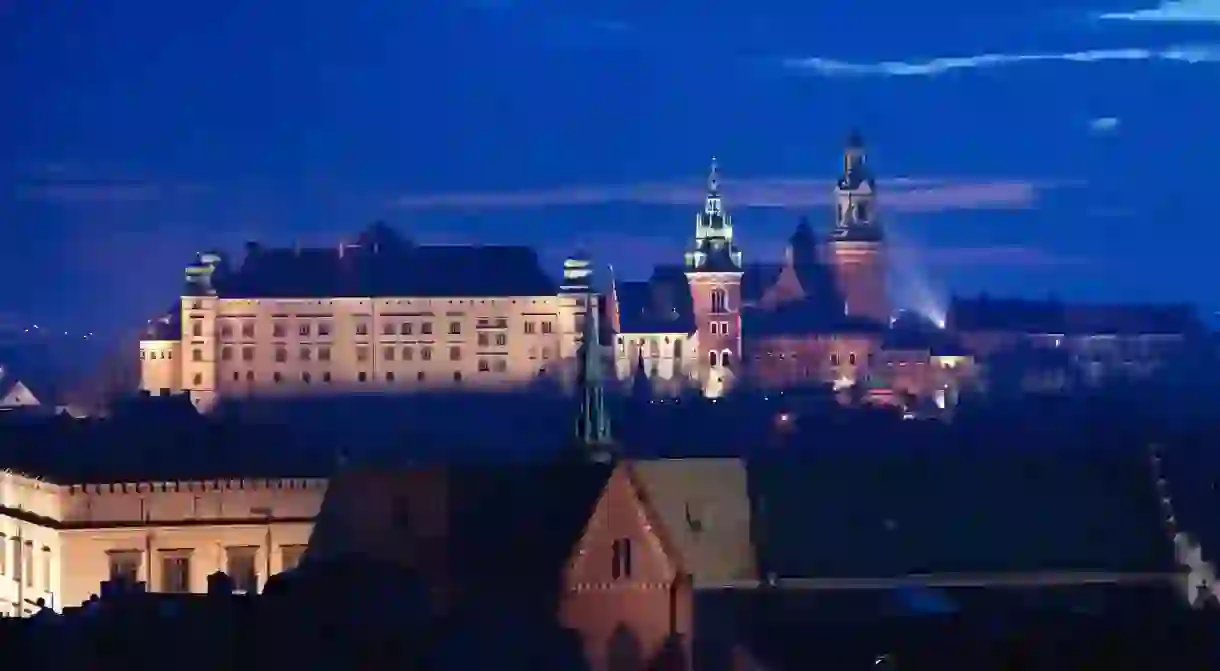A History Lover's Guide to Krakow

Travelling from the historic lanes of the UNESCO Old Town area to the looming tenements on the former Soviet side of the city, we seek out the top historical experiences on offer in Krakow, Poland’s most popular tourist destination.
Getting lost in the Old Town
Every historical tour of Krakow should begin and end in the UNESCO-listed Old Town area of the city. Once completely walled off by a ring of stony fortifications, the district is now delineated by the green Platy Park, which was created later, in the 18th century. On the northern side of the neighbourhood is where travelers can still wonder at the great Barbican keep (it’s said that the Poles fought off the invading Mongols from here more than once), before passing through the only remaining gatehouse, dating from the 14th century. From there, it’s possible to follow in the footsteps of kings as you walk the Royal Route, which cuts all the way through the Old Town, past the great Main Square and to the colossal Wawel Castle on the hill (more on that later!).

Copernicus and more at the Collegium Maius
Nestled between the tight-knit and quiet cobbled streets on the western side of the Old Town area is the Collegium Maius. This prestigious building was first raised sometime in the 14th century at the behest of King Władysław II Jagiełło; the monarch is perhaps best known as the namesake of Krakow’s largest university – the Jagiellonian – which is still responsible for management of the historic site. Visitors today are invited for regular guided tours (12 zolty [£2.20]), which reveal the old living quarters of the university deans, the oldest globe with a depiction of the Americas, and the very instruments once used by a certain Copernicus back in the 1500s.

Tracing the Polish kings and queens in the Wawel
If it’s the long history of Krakow’s regal past that has enticed you to this southern Polish town, then there’s certainly nowhere better to visit than the mighty Wawel on the hill. This was the epicentre of Polish power in the medieval and Renaissance ages, and hosted all the great Slavic monarchs before the court was moved to Warsaw in 1569. In the castle complex itself, there’s everything from restored living quarters to weapon-packed armouries, along with the totemic tombs of the Wawel Cathedral – there’s no fewer than ten kings buried in the crypt! But for all the history above, be sure not to miss the legendary tales that lurk below: the fabled lair of Krakow’s onetime bane – the Smok Wawelski dragon – is still carved into the base of the hill.

Reinvigorated Jewish heritage in Kazimierz
Perhaps the single most fascinating thing about Krakow is how the city manages to fuse millennia of history into its core of neighbourhoods. Visitors who head to the southern area of Kazimierz can unravel the fortunes of the town’s Jewish population, which went from booming prosperity under Bolesław the Pious and Kazimierz III to utter destruction at the hands of Nazis during WWII. Today, there are still some great remnants of the Semitic tradition of this part of Krakow, like the 16th-century Old Synagogue and the beautiful Remuh Synagogue. Meanwhile, Jewish heritage is flooding back into the area, with Levant eateries touting creamy hummus (great for breaking up the history) and regular free walking tours that chronicle the long past of the Jewish peoples of Kazimierz.

Soviet tales in Nowa Huta
Nowa Huta sprawls out on the eastern edge of Krakow. Built to the utilitarian specifications of the Soviets in the post-war era, the whole district follows a grid-like pattern. All the streets are hemmed in by endless tenement blocks and the rusted carcasses of onetime industrial works. This is arguably the best place in Krakow to come and explore the Communist experience of Poland; an experience that only ended in 1989 with the protests in Gdansk and the fall of the Berlin Wall. You can hop aboard a rattling Trabant car and see old tanks on the sidewalks, or simply immerse yourself in a classic USSR-age milk bar.

Sobering WWII history in Oświęcim
There’s arguably no more infamous historical site in all of Europe than Auschwitz, which still stands as a testimony to the darkest days of Krakow’s past some 1.5 hours away, in the town of Oświęcim. The whole complex of concentration barracks and killing chambers is now a UNESCO Heritage Site, and has been transformed into a truly moving museum and monument that both chronicles and honours the victims of the Holocaust. It’s a must for anyone interested in the modern history of Poland’s southern city, and the continent as a whole.














